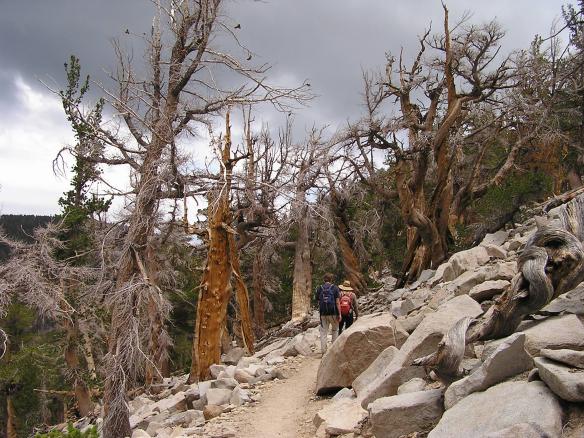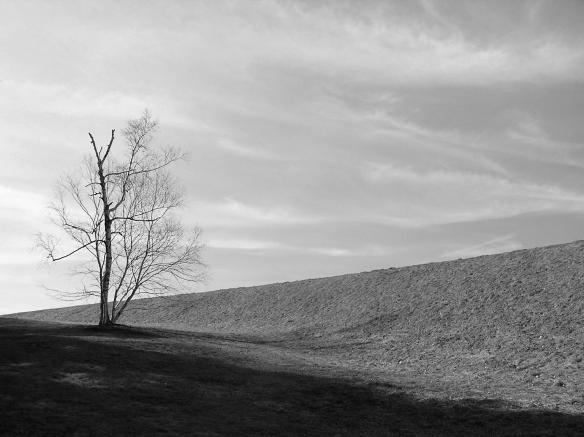When I wrote “Living at Tree Line” some ten years ago, I had never before written a braided essay. In fact, I didn’t even know the form had a name, and what’s more, I didn’t consider myself a writer of creative nonfiction. At the time, I was working on my MFA in fiction, and as part of the requirement for the degree, I enrolled in a class in another genre, creative nonfiction. It was in that class, taught by Alan Cheuse, that I read Annie Dillard’s “An Expedition to the Pole,” an intricately constructed piece that brings together the history of Arctic exploration with the author’s own personal experiences attending church and exploring her faith. This was the first braided essay I encountered, and I was enthralled by its possibilities.
After reading Dillard’s essay, I used it as a model to write my own braided essay—though I still didn’t know the name for it. The resulting piece, “Living at Tree Line,” was about bristlecone pine trees and my experiences working at a cemetery (the job I held while working on my MFA). I found the form to be freeing and innovative; I was especially taken with how placing two unlike things side by side causes each to cast a light on the other, illuminating previously unseen facets of both.
Photographers will wait days for the right light. In photography, light is everything. And this, I think, is true in braided essays as well. By bringing together unlike narratives, each strand provides a certain light that it casts on the others. Harsh noon sun, the long, somber shadows of twilight, and even the monochrome gray of an overcast sky create strikingly different images—even different realities. In writing, we often bounce the light of different times and different places off of our narratives. In a braided essay that I wrote later, I juxtaposed sitting in the shade of an oak tree in Nebraska with events that occurred a dozen years earlier in California. The light is different in Nebraska than in California, yes, but the greater difference is in time, not place. Being a twenty-something newspaper reporter casts a certain light on being a thirty-something mother—and vice versa.
Finally, after writing several braided essays myself, I discovered that Brenda Miller—and others—had identified and written about this intriguing form. In “A Braided Heart: Shaping the Lyric Essay” (which itself is a braided essay), Miller describes her own dawning awareness of form in creative nonfiction:
“I began to see more clearly that this form wasn't just about fragmentation and juxtaposition; it wasn't really mosaic I was after. There was more of a sense of weaving about it, of interruption and continuation, like the braiding of bread, or of hair. I had to keep my eye on the single strands that came in and out of focus, filaments that glinted differently depending on where they had been.”
In other words, the meaning is generated not in the individual threads but in the very act of interweaving them, in their coming together, but also, significantly, in the space that separates them. They are not homogenous, a whole; their integrity as separate units remains.
One key aspect of the braided essay is that these individual strands often seem, in the beginning, to not be connected to one another. The reader may at first experience a jarring feeling when two disparate items are juxtaposed, wrenched together, without explanation. Braided essays require two things of the reader: first, the reader must trust the writer; the reader must read without fully understanding the connections between, for example, a bristlecone pine tree and working at a cemetery. And second, the reader must be willing to work. Having come to the end of a braided essay, the reader must be willing to think about and make the connections, linking the parts now that the writer has provided all the pieces. That final connection happens in the reader’s mind, not on the page.
But maybe more importantly, at least from the writer’s perspective, braided essays require writers to learn to trust themselves and the workings of their subconscious minds. The best braided essays come about, I think, when writers wrestle with and twine together narrative strands between which they themselves don’t fully see the connections. The exercise of braiding, of twining, can be a process of discovery for the writer as well as the reader. So writers, trust yourselves. Trust in the work that your mind is doing. Grab ahold of those strands, grapple with them, bend them, weave them, and discover the remarkable light that this yoking of disparate times, places, and experiences can cast on your life.
And then, when you’re done with the writing, trust your reader to do the rest.
Yelizaveta P. Renfro’s essay, “Living at Tree Line,” which appeared in North American Review in 2004, was republished this spring in her book Xylotheque: Essays, available from the University of New Mexico Press. She is also the author of a collection of short stories, A Catalogue of Everything in the World, winner of the St. Lawrence Book Award. Her fiction and nonfiction have appeared in Glimmer Train Stories, Colorado Review, Alaska Quarterly Review, South Dakota Review, Witness, Reader’s Digest, Blue Mesa Review, Parcel, and elsewhere. She holds an MFA from George Mason University and a PhD in English from the University of Nebraska.




